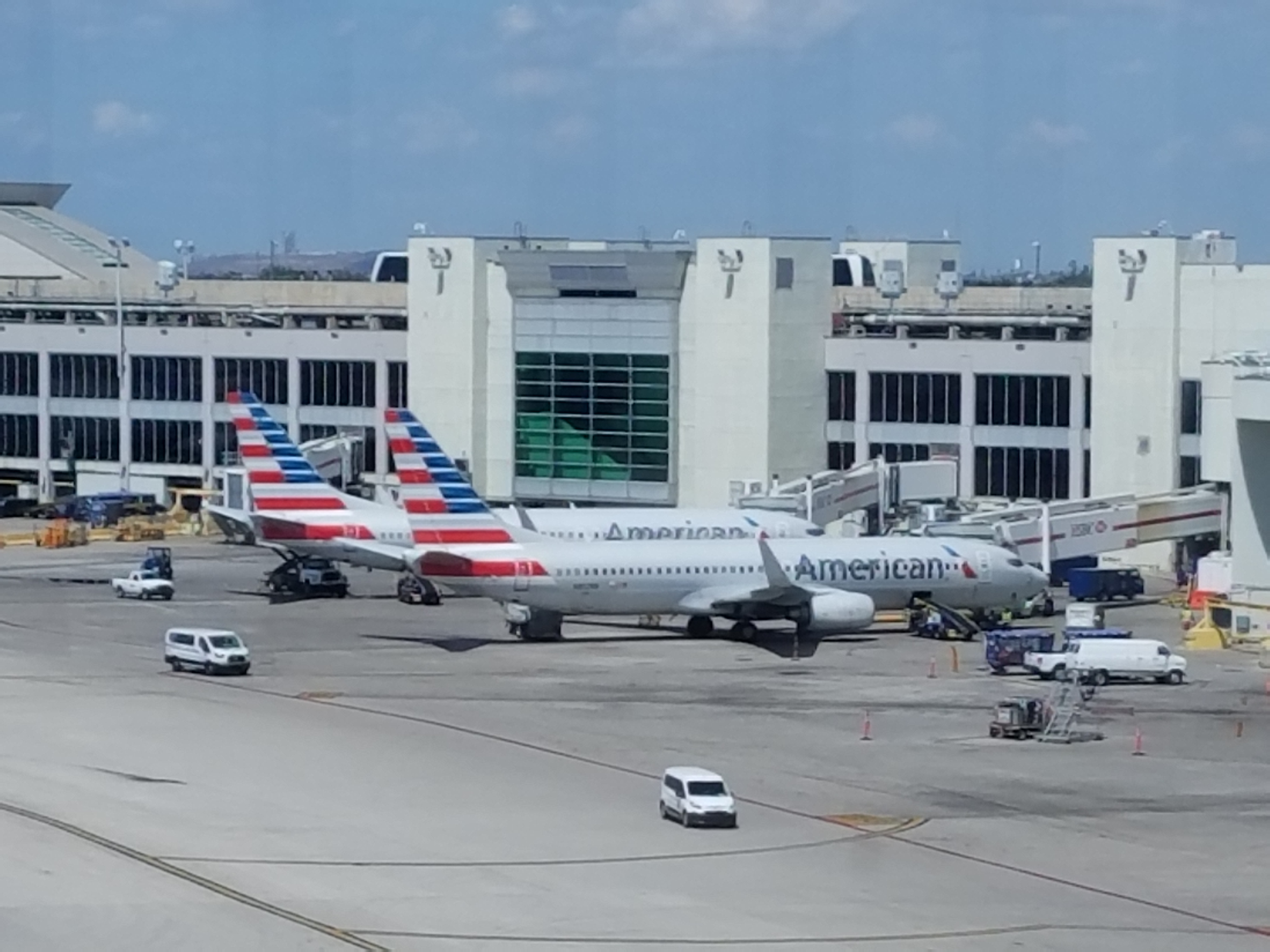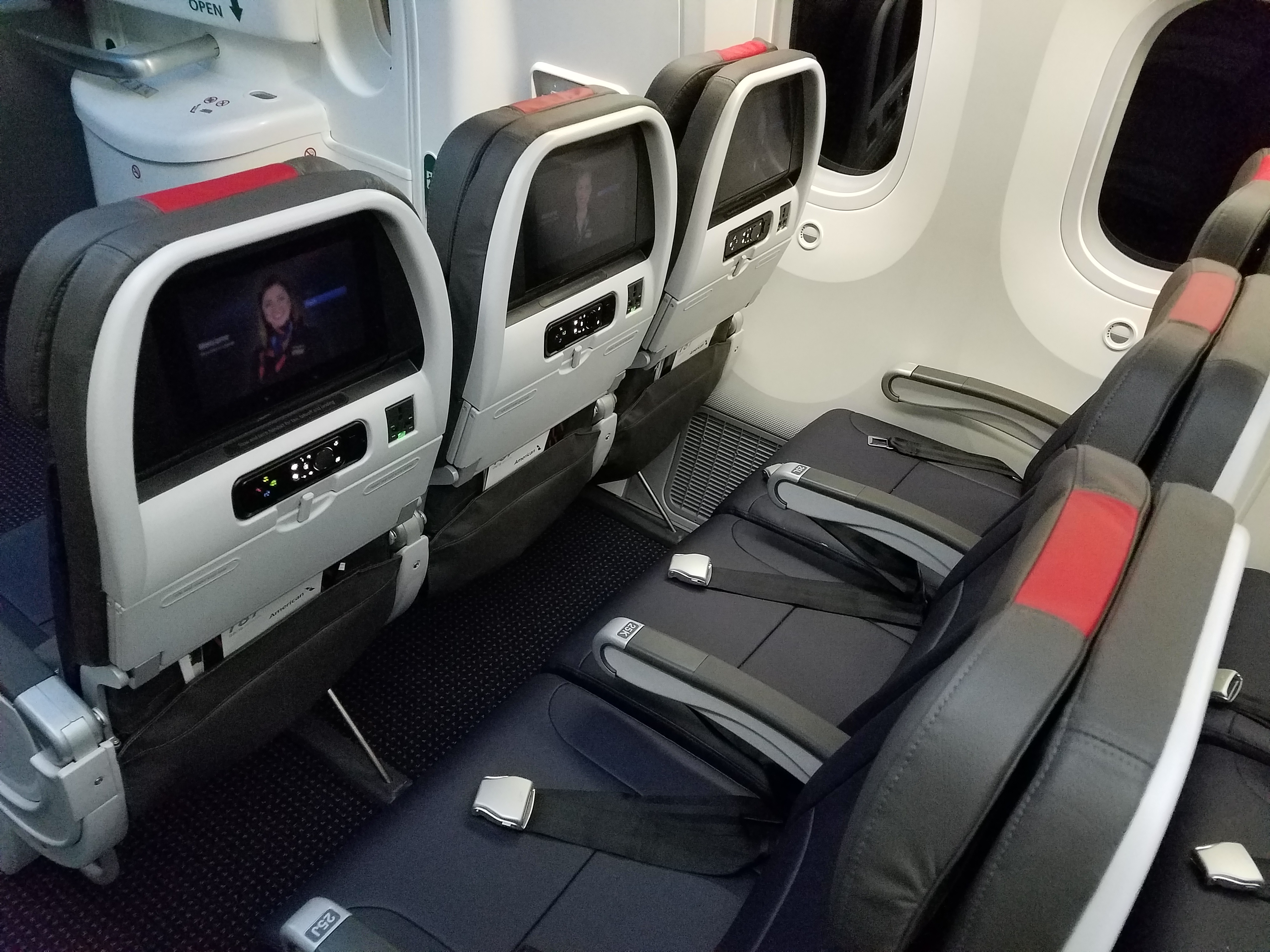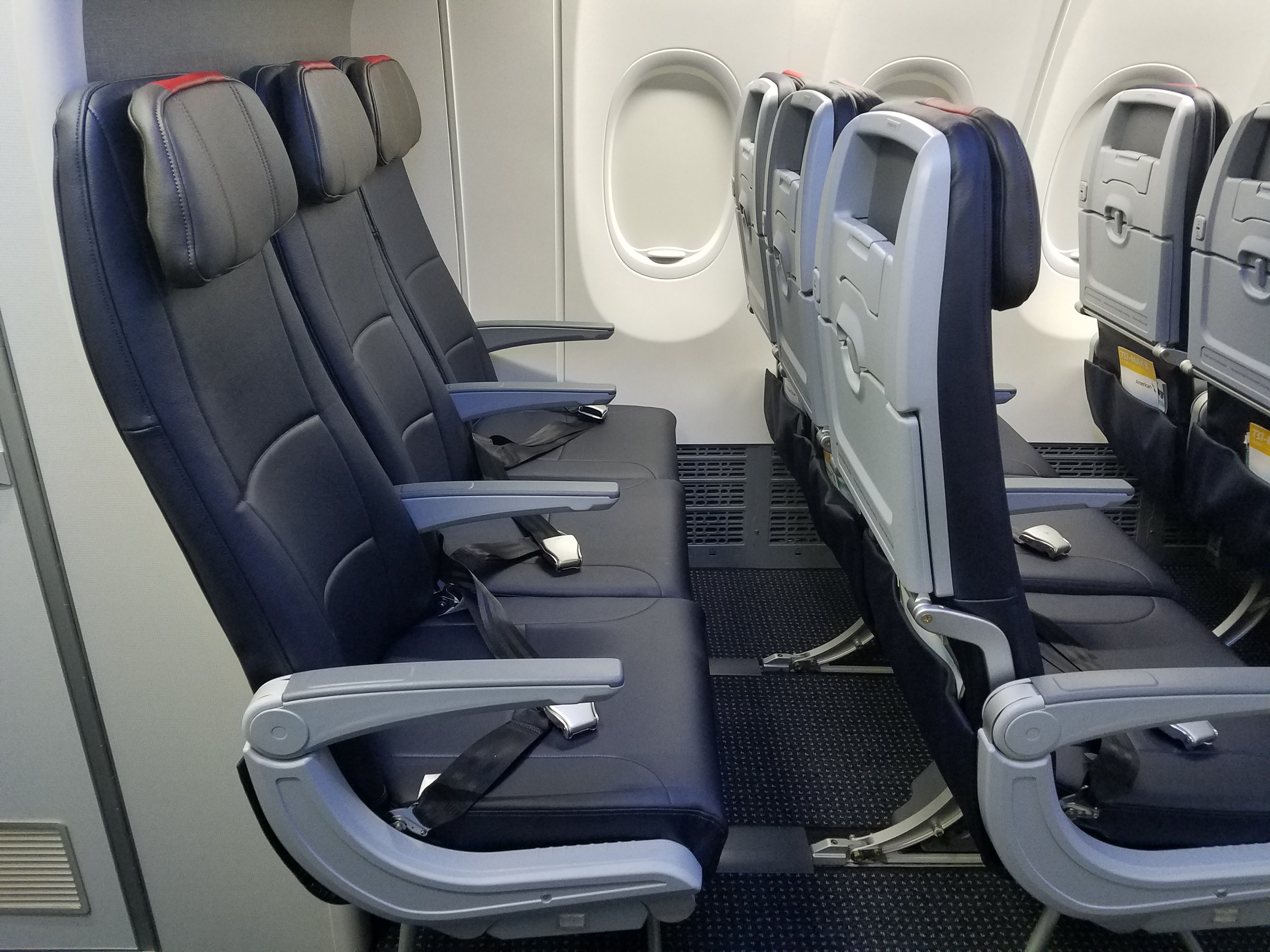American Airlines is expanding incentives for travel agents as it tries to win back third party booking business. That they’re doing this suggests to me two things:
- They’ve found paying travel agents does steer bookings. Agents will put customers on flights when they’re paid to do so.
- They’re increasingly deseparate for these bookings, and that their plan to win back corporate and agency business hasn’t accomplished as much yet as they’d have hoped.

American Airlines revenue was flat in the second quarter, a year after officially abandoning their distribution strategy that cut back on sales incentives and support, and pushed agencies to use ‘new distribution capability’ technology that meant selling ancillaries and not just tickets.
Their revenue was flat year-over-year even though they talked up billion dollar improvements.
- American didn’t actually say corporate business travel had grown. They said indirect bookings had grown (and, presumably, direct bookings fell by a similar amount).
- And this was costing them an annualized $320 million in expense (mostly commissions and GDS fees, but also staffing which isn’t included in that figure).

Pulling back from major business markets like New York, Los Angeles, and Chicago hurts them with managed business travel. They remain weak in San Francisco, Seattle, Houston, and Atlanta. They do well, no doubt, with mid-sized Sun Belt businesses.
And managed business travel isn’t fully back, as Delta continued to note in its third quarter earnings call on Thursday – and Delta seems to do the best in this segment.
Consultants aren’t on the road at client sites every week, week after week, the way they used to be when clients may be back in office but outside of finance mostly not every day or everyone on the same day. And more meetings are done virtually than before the pandemic.

Still, American may be spending a lot but probably isn’t getting the revenue contribution they expect because of their network. Plus they don’t have enough premium seats. They spent years removing premium seats from planes, and Delta noted during their earnings call that they have found they need to adjust schedules becaue of lack of premium seats (that premium leisure is buying those, often at a higher price than corporates, so they haven’t been able to accommodate corporates – while American doesn’t just lack enough seats “up front” but enough extra legroom seats as well).

So American has expanded the pool of agents that they’ll pay commissions to on domestic tickets. A common figure is 7%, even.
- The offer generally excludes the cheapest O, Q, and N class fares
- And they’ll usually pay just 1% on flights that aren’t to competitor hubs out of Charlotte, Dallas, Miami, Philadephia and Phoenix – they likely expect that from those cities they’re going to get the business anyway since they’re the dominant non-stop carrier. (Los Angeles, New York, Chicago and Washington DC hubs are more competitive so they’re willing to pay commissions.)

We’ll get a pretty good sense if I’m right that the strategy of buying business works but hasn’t yet worked well enough when the airline releases its own third quarter earnings in two weeks. They will almost definitely say the strategy is working and delivering the results they expect – but the truth will be in their revenue performance.
United CEO Scott Kirby has said that if American is generating an extra $1.5 billion from their sales strategy (as they claim) and also not making more money, they must be spending and losing that money somewhere (he says they’re losing it at Chicago O’Hare). The truth is that based on last quarter’s numbers the revenue itself doesn’t seem to be there. It needs to be in the third quarter earnings.


Corporate travel will never come back to what it was so there’s a shrunken pool of customers. Generally, business travel is more profitable to an airline than leisure travel. Employees can buy more expensive flights if direct or more advantageous schedule wise and why not if it’s OPP.
Also, if someone is paying your coach fare then there’s more incentive to pay out of pocket for cash upgrades, assuming you’re a more senior consultant that has the disposable income to do so. Long haul most companies will allow for premium cabins.
If the earnings aren’t there, after Robert’s plan to return to profitability, will the board finally sack up and realize they have the wrong team leading the company, and get someone with a comprehensive vision and strategy, not just a band-aid approach for each self inflicted wound and next lurking crisis?
While this sounds like a solve in theory, it’s the executives and employees themselves who are actively avoiding traveling on AA and are requesting other specific airlines with their travel agent / travel department. In my office, not one person travels on American anymore (their choice) and their travel agent has no sway in that matter.
Business is down across the US, with the exception of AI investment. AI, of course, is nowhere near generating the revenue to justify the investment. AMR is doing what it can (and I generally avoid AMR — and Delta for that matter, and I’m STE+), but we’re in for some rough air.
My employees fly out of DFW/EWR on a weekly Basis. American Increased the Business Fare on this route by $581. E-Ticket use to run us $981 R/T in Business, now the AAL E-Ticket $1,481.00 We switched our Employee Travel to United because we are flipping the bill and want to Remain Profitable!!!!!
Sounds like a ‘good sign’….not.
hE wAs RiGhT aBoUt EvErYtHiNg…
@Rick
The board? Why start now?
I cannot help feel that the trend is the result of policies put in place by Vasu Raja. Gone but not forgotten. The gift that keeps on giving. Of course, there are a lot of other factors at American Airlines that also drive this trend.
Leave it to Isom to pull back from AAs international hubs (where it still had somewhat of a competitive advantage in NYC years ago) just before the market demand pivoted to premium and premium economy passengers. For $30M/yr. Sheesh.
Delta said that saw a much larger gain (double digit) in corporate travel from its coastal hubs than it did from its interior US hubs.
They wouldn’t say what cities are driving it but I suspect they picked up corporate travel share from UA at EWR because of their operational meltdown at EWR, from BOS as B6 has wobbled, and at LAX as they are solidifying their position there.
AA simply took its eyes off the ball for too long; it is not always possible to return to what you had even when you realize you have made a mistake esp. when there are competitors ready to pounce.
and just as in pricing w/ LCCs/ULCCs, the DLs and UAs of the world are willing to discount to win business so it isn’t even certain that AA’s 7% commission will do much.
AA needs to earn the business by dramatically improving their operation
First ..show ISOM the closest exit door.
Then getting rid of ALL Management associated with USAir/ways and America West. That mentality and management was ineffective and caused multiple bankruptcies as well as brought down AA’s operation, image and brand..
@Tim Dunn — I’d argue the mindsets of the ‘big three’ are somewhat dependent on the location of their headquarters and top executives. For Delta headquartered in Atlanta and United headquartered in Chicago, probably has a net positive impact on their business and cultural strengths, as opposed to American based in Dallas. Because, while we have a big, beautiful country, filled with talented people of all backgrounds, it’s undeniable that the ‘blue’ states and cities drive much of the economic output in this country. Besides NYC, Chicago is the second preeminent and historic American city and industrial base. As much as Georgia used to be just cotton and churches, the state has come a long way. Texas pretty much still just has oil, and maybe pumping ‘dino-juice’ outta the ground all day makes folks complacent. Anyway, I hope this ‘theory’ riles up a few of ya. Go! Go! Go!
Do you think American Airlines’ renewed commissions for travel agents will actually help boost their corporate bookings — or is it just a short-term fix for deeper problems?
@1990 – American is based in Ft. Worth, not Dallas
American should just shut down at this point. Let Delta have dfw and United can have Mia and clt. Everything else about it is worthless and won’t be missed.
1990
with all due respect, your statement is ignorantly broad-brushed.
There are plenty of strong companies in Texas esp. ones that have nothing to do with energy, esp. in N. Texas.
and many would argue that AA hasn’t been a Texas-based company – at least in terms of mgmt mindset – since it merged with USAirways. Most of the execs that either made AA a great company before 9/11 when AA was at its greatest or since when they have floundered aren’t Texans; they just cannot pull come up w/ and execute winning strategies.
but the same thing, at least for now, can be said about WN which is headquartered in Dallas in the other “half” of the Metroplex
@Tom — That. Changes. Everything.
@Tim Dunn — Ah, so, US Airways, based in… Pennsylvania… hmm, is that a ‘blue’ state, or more ‘purple,’ these days? Yeah, my ‘theory’ here is definitely ‘correlation without causation,’ though I did enjoy this brief back-and-forth. *wink*
AA and US were run on values from PHX-based America West.
the color the state has nothing to do with it, my friend.
the quality of the management team does.
AA can talk about a pivot to premium all they want but until they actually execute , the words are hollow . Need to expedite the premium refresh – clubs , cabins , catering etc as soon as feasible . It won’t be cheap but they have already proven that ignoring upgrades won’t drive revenue . They also need to tackle the low hanging fruit – they need to address their STILL woefully uncompetitive Million Miler program . If loyalty really matters then you can’t have a Million Miler program where 3 million milers get same same benefits and level as 2 million milers , especially when travelers can get equivalent benefits for achieving million miler status at UA . Remember , the benefits derived from the Million Miler program only really matter IF a traveler actually flies the airline . So no cost to adjusting the program if the traveler doesn’t actually use AA – easy way to drive traffic to the airline is to equalize the Million Miler program to better match the competition. Instead , when they told 3 million milers that they were equivalent to 2 million milers , they perhaps pushed traffic away .
@Tim Dunn — Well said.
@1990
As someone from the Minneapolis side of MSP, I wouldn’t care, and I do refer to the metro area as just Minneapolis but someone with St Paul allegiances will definitely get vocal if you call a St Paul based company as a Minneapolis company. Believe me, it’s different.
Your point was about being in red state vs blue state but I wonder if there’s still a difference between the attitudes and philosophies of people and companies from Dallas vs. Fort Worth. From what I saw in a TV show or something Dallas was all businessmen vs Fort Worth was stockyards and such. Can anyone shed some light here on the present day situation?
I’m SO happy that the APA, AFA, etc. decided to go with Cheapskate Parker rather at the time of the so-called”merger”… they were even bragging about it back then. I really blogging that this isn’t going to end well. Here we are, more than a decade later and AA is still suffering from the consequences. They made their own bed.
It’s a band-aid. AA is still clueless. Sent them a thoughtful, detailed note of my (not great, near constant) experiences with them as 17 year Exec Plat. Waited a week to get a pathetic form letter which addressed absolutely none of my concerns. Not. Even. One.
When loyalty is a one-way street, loyal customers (100K miles a year in seat, $115K credit card AA spend) walk away. Good luck replacing business flyers like me with Joe Sixpack traveling twice a year in Basic Economy. AA is accelerating as they enter dead man’s curve. Totally clueless.
I’m a corporate travel agent. Doesn’t apply to their hub cities…Phx/DFW/CLT–and to the lowest class of service. I seldom make the 7%.
*frowning
@IsaacM — Kinda like how folks from Newark, or Long Island, or Westchester County, might suggest that they ‘live’ in NYC… but, friends, if ya take Jersey Transit, MetroNorth, or the LIRR, ya likely in tha suburbs. (One exception, I’d be open trading Staten Island for Jersey City. SI is more like NJ anyway.)
Scott is 1000% right. To bring American to what once was, a first class airline, they have to show Isom the closest door out along with all the so called executives from Usair and America West they must clean house from A to Z. I’m a retiree from AA after 38 years with them and I won’t fly AA. Really sad what AA has become.